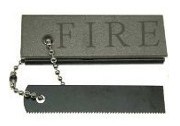Tires are the shoes of your car. They are (ideally) the only part of your vehicle that is supposed to be making contact with the road, making sure that control over the multi-horsepower machine is maintained as it travels over the road at speeds unattainable by mere land-dwelling animals.
While they are meant to be worn down, some of us motorists aren’t exactly doing it the right way. The result? The tires need to get replaced way before they were expected to. Worse, they could give out on you while you’re on the road, sometimes in the most catastrophic of ways.
The time, money, stress, and risk to life and limb just aren’t worth being careless with your automobile’s tires, so for the sake of educating my fellow car owner and driver, here are some common causes of premature tire wear and damage, and ways to avoid them:
Incorrect Tire Pressure
This is probably one of the most frequent causes of tires having uneven tire wear and inevitably, damage that can seriously affect the performance and integrity of the tire. Various tire sizes and types have different specifications, and one of these is the recommended tire pressure, expressed in psi (pounds per square inch).
Reputable car and tire manufacturers usually indicate the recommended tire pressure levels somewhere on the vehicle, and on the tire itself. When in doubt, there are plenty of online resources that can help you determine the exact tire pressure levels for the specific tire and vehicle combination. One example would be Firestone’s tire pressure microsite for this very purpose.
Picture Credit-Platinum Leasing on Ebay
Improper Wheel Alignment
Most newbie car owners and drivers think there’s nothing beyond slapping a set of wheels onto a car to get it to work. We experienced drivers know that is so very far from the truth. It’s not enough that the tires are properly inflated and the nuts securely tightened; the wheels have to be properly aligned.
Badly aligned wheels will result in uneven tire wear and the car veering off to one side if you let go of the steering wheel. Not a good thing.
Your eyes and primitive tools won’t be enough to do wheel alignment. Computerized wheel alignment using lasers and other high-tech measurement doohickeys would be best for this task, and companies like Goodyear even help you out to find auto shops that can do these advanced wheel alignment services.
Tire – Terrain Mismatch
Many neophyte car owners are prone to purchasing or mounting the wrong tires for their vehicle, and often it will result in poor handling, control, and rapid tire wear. It doesn’t take a lot of brain juice to figure this out, and there are websites that can help you with the kinds of tires and which to utilize given the specific terrain you traverse with your vehicle.
Check the sidewall of the tire for more details about it. Aside from the cryptic numbers that are on it (Discount Tire Center has a guide for this), the brand and model is usually followed by the kind of terrain they are designed for.
By default, most cars that will presumably be driven in the city will have the standard H/T (highway) tires. These perform at their best on hard concrete or asphalt roads, and in their element, they don’t wear down too fast.
If you drive a more all-around sort of vehicle like a sport utility truck or an SUV, then it will very likely have A/T (all-terrain) tires mounted on them. These are made to be driven over various kinds of surfaces, and emphasize on traction rather than speed or economy.
In some rare cases, you might even have M/T tires on the vehicle you just bought, or perhaps you’re looking at some in the tire store because they look really cool with their big monster-truck treads.
Now let me stop you there: unless you live or work in an area that doesn’t really have concrete or asphalt roads (meaning, you pretty much run over dirt and rocks), do not get M/T tires. They are exclusively for this purpose, and are very noisy and fuel inefficient on roads. They will also wear down very rapidly.
I hope you learned a bit more about your tires from this short article. Stay safe, buckle up, and keep on driving!
About the Author
Michael Green is a veteran of the rat race, having worked at a business consultancy firms in San Francisco and New York for most of his young adult life. He left on his fortieth birthday to become a fully self-employed entrepreneur, and settled in San Diego to pursue various opportunities within the city. Obviously, he likes to drive, and he likes fast cars and sport utility trucks.











